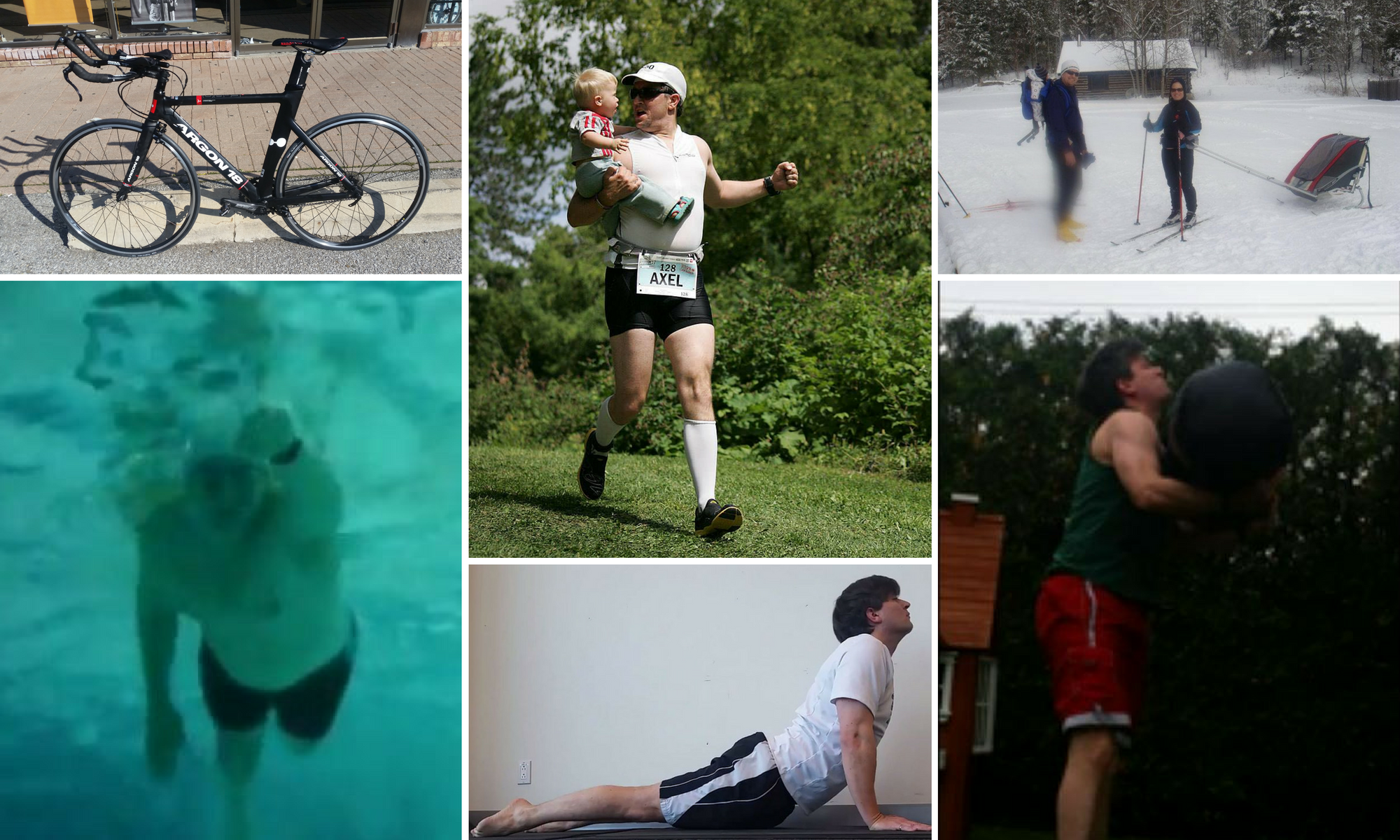I announced in January that I had selected a training plan for the Barrelman Triathlon (Half-Iron). The plan is of a 27 week duration, meaning the start date of the plan was Monday March 16th. That falls right on our family ski vacation (recap to come), but as I had mentioned in my February Goals post, I’ve been implementing the structure of the ‘Basic Preparation Phase’ for nearly a month and a half. Here’s why this was a good idea.
Starting the Habit
-
For my program, Tuesdays and Thursdays had both swim and run workouts. The more of these I did, the more #TwoferTuesday and #TwoferThursday became the norm for me. Come those days, I was packing a swim-suit, running shoes, etc. It became a fact of life, and when the real program starts, I can put my concentration into what kind of swim and run workouts I’m supposed to have (speed, endurance, etc.)
-
Any formal training program should tell you what they’re assuming about your basic level of fitness and current training volume. These tend to be described in fairly general terms, but by pre-sampling the training program, you’ll have a better idea what you’re in store for at the outset.
Learning What Works/What Doesn’t
Tech
-
Doing triathlon training in February in Canada means a log of indoor work. Tracking treadmill runs, was a challenge since phone apps want GPS data (ditto a Garmin), but Samsung Gear Fit tracks well through step counting. BUT, not if the Samsung Health App is started through the phone. Endomondo pairs with my ANT+ Garmin HR strap, but the Samsung app doesn’t seem to, luckily, I still get some HR data through spot checks the Gear Fit makes.
Logistics/Scheduling
-
On one of my ‘twofer’ days that have a swim and a run, I opted to do a treadmill run and had asked my wife if it was OK if I did the swim in the evening after the kids were in bed which is usually “clean up the kitchen then quality time” time – then I wouldn’t need to do an early morning workout. Then, the Lightning Kid took forever to go to sleep (and asked for me) so what should have been an 8:00 departure turned into 8:30 or later. An evening workout runs the risk of making sleep difficult, and the truth is I was feeling exhausted (and I had the sense that a cold was coming on). I scrapped the swim in favour of rest, since getting sick would have sacrificed more than one workout, but the bigger takeaway is that mornings might be more practical after all.
-
The training program doesn’t seem to have much in the way of rest days, at least not in the early season. This may be a problem for a 40-something athlete like me, I may be able to work around it by turning some workouts into ‘active rest’. The best example might be substituting a Yoga class for a weights/strength session.
-
As of right now, the first week of the plan fell on the vacation in Vermont, and I got 3 hours 55 minutes of training volume done in a week that should have been 9 hours 30 minutes. Yet, thanks to having followed the basic structure for most of February and early March, I could pick up at week 2 without missing much, at least in theory. What I’ll do instead, is do Week 1’s workouts (since they have some time trialing that will be used to benchmark some of my paces and performance) then move to Week 3 and be in sync.
What’s Missing
-
What I didn’t do well during my pre-sampling, is get to know the different workouts. The table/spreadsheet has codes to classify workouts into different categories like time testing, endurance, speed, form, muscular endurance, anaerobic etc. and now that I’m in the thick of it, I find myself pressed for time to learn what I need to do for tomorrow’s (or even today’s) workout. I still haven’t transcribed everything into my own spreadsheet, but I should be OK until May or so.
Make sense? Or am I crazy (I love it when you call me crazy!)?


